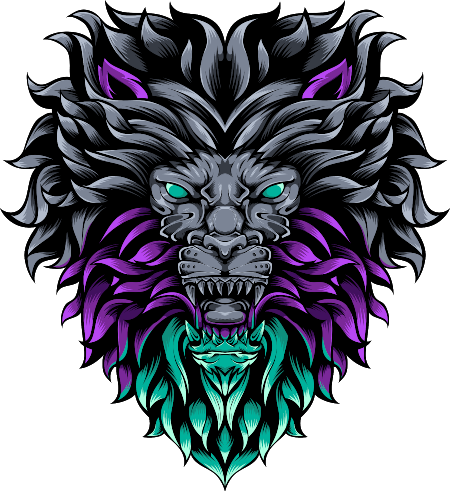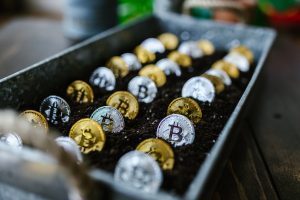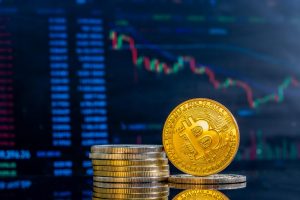Non fungible tokens (NFT) are one-of-a-kind digital tokens that are not duplicable or divisible, contain information about their owner, and are registered using smart contracts. These allow us to prove the legitimacy, ownership, and scarcity of digital goods. They recreate the concepts of property, uniqueness, and scarcity that we have in the physical world in the digital realm. This has the potential to be a true revolution in many areas of the economy. To give just a few examples, we can mention the art or gaming sector.
The term NON-FUNGIBLE is attributed to them means that they cannot be replaced by a similar asset of the same value because it has specific characteristics that make it unique. For example, a bill or a bitcoin is fungible because you do not care to exchange it for anything because what interests you is its value, not its properties. A €50 bill is not unique; there are millions like it. Instead, a painting is an example of something non-expendable. What interest you is not only its value but also its characteristics and properties. Therefore, it is something not replaceable.
What Are Smart Contracts?
A smart contract is “a particular type of instructions stored in the blockchain. And it also can self-execute actions according to a series of parameters already programmed. All these in an immutable, transparent, and completely secure way. Intelligent contracts aim to eliminate all kinds of intermediaries to simplify processes, and in this way, save costs for the end consumer. For example, the high price of the notary would disappear since an intelligent contract is capable of being executed and enforced by itself, autonomously and automatically, without the need for any intermediary. A smart contract is valid without any authority since it is visible to everyone and cannot be modified on blockchain technology. This gives the contract a decentralized, immutable, and transparent character. Finally, it should be noted that smart contracts are computer codes (“scripts”) written with programming languages.
What Is The Blockchain?
Also, we have previously commented that smart contracts are stored on the blockchain. The blockchain is a distributed database formed by blocks designed to avoid modification once data has been published in the general ledger or the database. In this way, it is achieved that the information is immutable and that the blockchain can be programmed to store transactions and anything that represents value. It’s a technology that’s well-suited to storing data in an increasingly time-ordered manner without requiring a centralized body to ensure its integrity and immutability.
HOW DO NON-FUNGIBLE TOKENS (NFTS) WORK?
In practice, an NFT is simply a single token that represents a digital file. Each one has a unique ID linked to it; metadata (creator, price history, what it is, etc.). When a creator creates an NFT, this information is immutably recorded on the blockchain, becoming a digital passport. In this way, every time that digital work is distributed on another platform, that platform can verify your ticket and see the complete history with all the information.
WHERE IS NFT ALREADY WORKING, AND HOW IT IS CHANGING THESE AREAS?
Games
Games are now the most prominent digital economy sector with many completely non-interchangeable items. And they can significantly benefit from the implementation of NFT. Each in-game item becomes more valuable by being tokenized. This means that the game becomes more beneficial to the player. Furthermore, developers will no longer be required to use complicated models to extract money from the player. NFT and blockchain also makes the Earn to Play model possible in games. This is already taking place. It’s only that you have to use unofficial marketplaces to withdraw funds, where both the vendor and the buyer have minimal trust.
By definition, any asset in a blockchain game is easily transferred. As a result, for many people, gaming can become a viable source of revenue. Some gamers from third-world countries earn more in games than they would offline in the most well-known crypto game, Axie Infinity.
Art
The traditional ideals evolve before our eyes, just as they did five centuries before, and are mirrored in art. A technology evolved five centuries ago that turned everything upside down. After that, there was typography. Now – blockchain. And, most importantly, the artists have finally received financial support, which allows them to devote all their free time to creating and exploring with its help the changes taking place in society.
Some digital artists deny singling out “crypto art” as separate. Yes, this is a lengthy phrase. However, if you stare at crypto art for a long time, it begins to peep into you, and it becomes clear that all of these pieces are linked not just by their tokenization. The choice of subjects, genres, and artistic techniques all contribute to a pretty unified environment, for which a separate name “crypto art” has been coined, albeit it is not yet completely formed.
NFT’s programmability makes it possible to automate royalties, for example. That is, each time your work is resold, you will be paid a percentage. And it will not be contingent on the middleman’s willingness or unwillingness to pay you. The commission is registered in the smart contract and automatically to your crypto wallet.
Rarible is the most democratic platform. Anyone can amuse (that is, tokenize) their work. But in general, Rarible is not only for crypto art. This is a site where you can sell your NFTs.
In general, and specifically for crypto art, OpenSea is the largest NFT marketplace. OpenSea is primarily used for secondary sales. However, they have all they need to mint their work. It’s just that promoting them on OpenSea is a little more complicated. OpenSea, on the other hand, is a good alternative if you rely on your subscribers.
Virtual Universes
Virtual universes or metaverse are virtual worlds that give a sense of presence in space and time, social interaction, and the opportunity to take part in the virtual economy of the world; this has a tremendous impact on the virtual world’s community.
Minecraft and Roblox are two examples of classic virtual worlds. In the blockchain metaverse, everything that belongs to you is yours in the form of an NFT. Any of your NFTs can be brought to the metaverse, including land, buildings, apparel, and, most crucially, any of your NFTs. For example, you can buy crypto art on SuperRare and hang it in your home or gallery.
The metaverse and blockchain technologies were designed to complement one other. The blockchain provides in the digital world what physical and legal regulations give in the real world.
The metaverse is also a great ecosystem. That is, the metaverse is an AppStore for which you can create your games and applications (for example, auto racing), and internal purchases in these applications will be paid for with cryptocurrency. You have to accomplish something in the virtual world, and the developers don’t have enough hands to realize all of the possibilities from the real world on their own.
The future belongs to the meta-universes. I am confident that a fair share of the population will be spending most of their time in the metaverse in a few years.
Collecting
After art, NFT technology has had the greatest impact in the second domain of life. It was not difficult to transition from physical collectibles to virtual collectibles. I believe this occurred because, as with art, tokenization increased the value of these objects by introducing new advantageous features and removing downsides. For example, virtual sports cards are not just pictures but also videos and, in general, any other information. It is easier to sell and change, and NFT cards do not deteriorate.
WHAT ARE GAS CHARGES, EXACTLY?
Miners, who use powerful equipment and a lot of electricity, process and validate every transaction on the blockchain. The quantity of computational work required to execute a task is referred to as “gas.”
To complete the computations, miners must pay gas expenses. In essence, gas charges operate as a motivator for miners and help to reduce spam on the network. Users must pay gas fees to sell and buy NFTs, as well as to mint NFTs, on most NFT exchanges. The price is determined by the quantity and type of computations needed to verify transactions; the more complicated the computations, the higher the gas fee.
You must set a “gas limit” for the Ethereum network, the maximum amount of gas you are willing to pay for each transaction. In the meantime, the “gas price” is the amount you are ready to spend per unit of gas. Put another way, gas fee = gas limit x gas price.
The actual gas price fluctuates and is influenced by various factors, including network traffic. The amount you select as a gas limit can affect how quickly your transaction is completed. Miners would prefer transactions with high gas fees over yours if you set it too low.
HOW DO YOU GO ABOUT MAKING YOUR NFTS?
Making your own NFTs is surprisingly simple. The primary platforms for building NFT are OpenSea and Rarible. Both systems allow users to upload their artwork and create collections without knowing anything about blockchain technology. While Rarible has the most overall sales, OpenSea has a broader range of services, including the opportunity to construct your own NFT web store using the OpenSea exchange. Before you start, you have to know some initial costs. NFTs work with blockchain. They usually do it with Ethereum. The use of blockchain has a price, a network fee called gas, which you will have to pay to tokenize your art. During the creation process, Rarible requires artists to mint their NFTs on the blockchain (on-chain). This means that the cost is lower if you operate regularly. If you plan to sell a pair of NFTs at enormous prices, Rarible is probably your best option. However, if you want to generate a lot of cheap NFTs, you should use OpenSea’s Collection Manager.
Users can create a new collection with OpenSea Collection Manager by paying a one-time cost. An unlimited amount of NFTs can be manufactured from that collection, and the centralized OpenSea team holds them off-chain until a transaction is made. The buyer will then pay the transaction’s gas rate, after which your NFT will be placed on the chain and transferred.
The step-by-step process of using OpenSea to generate your own NFTs in a collection and will teach you everything you need to know.
Step 1: Configure MetaMask
The first thing you will have to do to create your own NFT is to set up a software wallet. This wallet can hold your NFTs, and you will also need to use it to pay for blockchain gas fees later on. Head over to metamask.io to download the app or add the extension for Chrome. Creating a MetaMask wallet is simple and free. Just keep note of your passwords if you need to get your wallet back. Remember that wallets do not store cryptocurrencies or NFTs (they hold your private key, which is necessary to authorize transactions). All cryptocurrencies and NFTs are stored on the blockchain with the wallet ID that designates the property.
Step 2: Tokenize your art
You can start making NFTs once you’ve built a MetaMask portfolio.
Go to opensea.io and select the Create option from the navigation bar to get started. You may now use OpenSea to link your MetaMask wallet and begin to work.
Give your NFT collection a name and click the “add new item” button. You can now upload the file you want to tokenize and give it its own set of attributes to distinguish it from the rest of your collection. Set a retail price for each item after determining how many copies you want.
Step 3: Put on the market for sale
To sell your first NFT, you will need to enable OpenSea to sell items from your account. This requires a blockchain transaction, so you will have to pay a gas fee. This cost must be paid the first time you create an NFT collection. Send some Ether to your MetaMask, and you are good to go.
WHAT IS AN NFT MARKETPLACE?
NFT marketplaces are online platforms or “NFT shopping malls” where they can be sold, bought, or traded. They’re made just for non-fungible tokens, and they’re where all types of digital works are saved, shown, sold, and in some circumstances, even launched.
Where to buy and sell NFTs?
The answer to the question “where to buy NTF” or “where to sell NTF” is straightforward – on the marketplace. But on which one you will need to choose, because there are already many of them, on different blockchains and for additional copyright requirements.
Examples of NFT marketplace
- Opensea
- Rarible
- SuperRare
- Mintable
- Gate.io NFT
CONCLUSION
NFTs will stay and will have a significant impact on a few industries. However, I also think that we are at a very early stage and that there is still a lot to develop and implement. Also, it is possible that we are in a moment of euphoria and that they are being bought by buying certain NFTs for large amounts of money. That does not remove the potential that NFTs have for the future of economies and the digital world. This is just the beginning.




